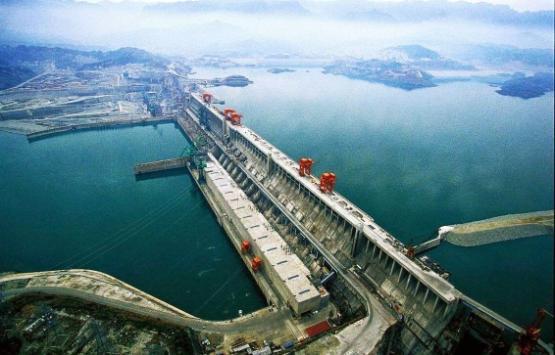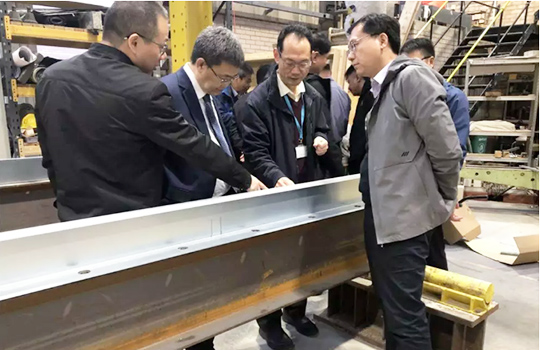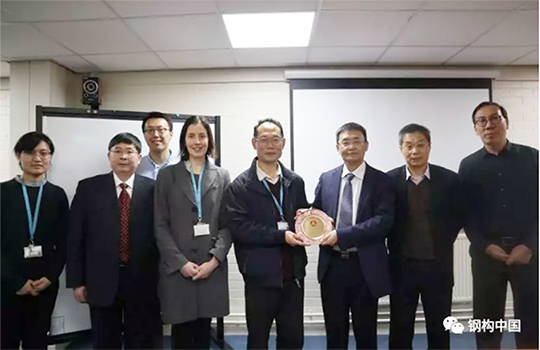Research
PhD Research projects
On this page you will find recent - active research projects from the department's PhD students.
PhD student: Awesar Hussain
Supervisors: Dr Jaan Pu and Professor Yakun Guo
Background
To understand vegetated flow phenomenon and coherent flow structures in open channel flow with vegetation, investigations will be conducted for its turbulent bursting phenomenon. This study will also conduct experimental work using Acoustic Doppler Velocimeter (ADV) to measure flow velocity and its fluctuation in order to compute velocity characteristics, Reynolds stress and turbulence intensity. In this study, the analytical model will be utilised to predict rigid and totally flexible vegetation.
Aims
- To investigate the lateral distribution of depth-averaged streamwise velocity in a rectangular flume channel with streamwise flexible and rigid submerged vegetation.
- To establish a relationship between the vegetation drag coefficient, as well as analysis of the viscosity coefficient and bed friction factor.
Methodology
Based on analytical model, the higher vegetation density resulted in larger velocity above vegetation canopy and smaller velocity within vegetation area. As vegetation density increased, more water would pass above canopy since large volume of leaves and stems within vegetation hinders flow through it. To reflect the contribution of vegetation on the flow pattern, flow rates were calculated in two layers: the upper non-vegetated layer and lower vegetation layer.
The proposed method will be compared to others’ laboratory measurements in various vegetated flows. The proposed model will adopt the theory of a large-deflection cantilever beam in its consideration of height deflection of flexible vegetation.
Experiments will be set up in this study to investigate different kinds of flexible and rigid artificial vegetation and their effects towards open channel flows. The velocity will be measured using Acoustic Doppler Velocimeter (ADV). The proposed analytical predictions of time-averaged velocity and velocity fluctuations will be compared to demonstrate the capability of the analytical model.
|
General layout of vegetation stems in laboratory flume |
Acoustic Doppler Velocimeter (ADV), produced by (SonTek) |
|---|
PhD student: Tarek Taha
Supervisors: Dr Jaan Pu and Prof Tim Gough
Background
Dilute and dense sediment suspension has been studied for decades. The former has been developed under both open channel and pipe flows analytically likewise for the latter. Some of the most prominent researches conducted by Kondu and Ghosal (2017), Wang, Ni and Borthwick (2000), Zong (2011), Jiang, Law and Cheng (2012), Wang, Fu, Y Huang and G Huang (2008) and Wang and Ni (1990) have potently suggesting to adopt a two-phase model to describe sediment laden flows, regardless of the characteristic of a concentration profile. This work will look into improving the existing studies in order to look into turbulent dam-break wave induced sediment transport behaviour.
Aims
- To obtain a solution accounting for hyper-concentrated dense sediment suspension.
- To increase the modelling accuracy of the free surface profile of a dam break wave solutions.
- To increase the modelling accuracy of the sediment concentration distribution solutions.
- To illustrate the transition between type I and type II sediment concentration distribution profiles.
- To obtain a solution that provides the free surface profile of a dam break wave under dry/wet bed conditions, and the sediment concentration distribution throughout dam break wave.
Methodology
The concentration of sediment laden flows within dam break waves is a field of fluid mechanics that has yet to be developed properly. This study will provide a solution illustrating the free surface profile of a dam break wave, alongside the sediment concentration profile at any given point throughout the dam-break wave. The solution will provide clear representation to type II hyper-concentrated sediment distribution. The methodology involved will be adopted suspended sediment transport equations into the turbulent dam-break governing model.

Above: Three Gorges Dam (2012), China
PhD student: Mohammad Shawqi Aljaberi
Supervisors: Dr. Mostafa Mohamed and Dr. Therese Sheehan
Background
The presence of erosion voids near buried pipes will affect the soil support at that location. As the void develops the soil support decreases, which can result in uneven load spreading in the ground surrounding the pipe. The loss of soil support during the formation of the erosion voids will influence the soil-pipe interaction and can lead to high tensile strains in the pipe, which may lead to failure of the whole system.
Aims of the project
The aim of this research is to develop deeper understanding for the behaviour of buried structure e.g. flexible pipes with existence of voids as well as to assess the inclusion of reinforcement layers to protect such pipes. This understanding would lead to development of design guidelines and tools for practicing engineers.
Methodology:
- Comprehensive experimental work on large scale tests that will allow the testing of the whole system including buried flexible pipe beneath reinforced soil with void existence under the application of cyclic loading.
- Parametric study to investigate the effect of various parameters that could affect the behaviour of the whole system.
PhD student: Asma A Bder Muhmed
Supervisors: Dr Mostafa Mohamed and Dr Amir Khan
Background
Expansive soils experience periodic volumetric changes due to the seasonal water fluctuations, which will result in severe damage to construction projects. Lime’s use is one of the solutions that has been extensively utilised to improve the expansive soil properties. With the continuous exploration of new materials to improve the clay properties of lime treated clay, a new kind of ameliorants will be used (Athel dried leaves). Hydrated lime will be mixed with artificial clay in conjunction with various amounts of the Athel dried leaves.
Research objectives
- To investigate the effect of water content due to seasonal fluctuations on the physical and engineering characteristics of lime treated clay.
- To investigate the benefit of Athel leaves in enhancing the lime-clay reactions
- To study the microstructure changes that occurs in expansive clay as a result of lime treatment and the Athel addition.
Methodology
To achieve these objectives, three types of laboratory testing will be employed throughout this study as shown below:
PhD student: Adam Almabruk
Supervisors: Dr Mostafa Mohamed and Dr Jaan Pu
Background
At present, cohesive sediment plays a key role in the functioning of healthy eco-systems. Cohesive sediments cover a large part of the earth's surface with the exception, perhaps, of some deserts and some parts of the ocean seabed. Coastal areas comprise approximately 69 % of the major cities of the world; therefore, understanding how coastal aquatic environments are evolving due to sediment transport is important (Wang and Andutta, 2013).
Aims
The primary aim of the proposed PhD project was to experimentally investigate deposition, consolidation, and subsequent erosion of mixed soft cohesive and non-cohesive sediments under turbulent flow.
Methodology
Experiments were carried out using the longitudinal flume to explore the influences of composition on consolidation behavior at room temperature of 20-22° C. Sediments were mixed in dry condition before added into water flume. The pore pressure readings were taken at various levels during the deposition and consolidation stages. The experiments on the longitudinal flume were conducted under different flow rate of (10, 15 and 25 mᶟ/hr) to assess the effect of turbulence on sedimentation and consolidation.
Soil-structure interaction of buried rigid and flexible pipes under geogrid-reinforced soil subjected to dynamic loads
PhD student: Ahmed Mohamed Elshesheny
Supervisors: Dr. Mostafa Mohamed and Dr. Therese Sheehan
Background
Because of the recent worldwide construction expansion, new roads and buildings may be constructed over already existing buried infrastructures e.g. buried utility pipes, leading to excessive loads threatening their stability and longevity. Recently, additionally applied loads over water mains led to catastrophic damage, which resulted in severe damage to the infrastructures surrounding these mains. Therefore, providing protection to these existing buried infrastructures using geosynthetic-reinforcements against increased loads due to potential new constructions is important and necessary.
Aims of the project
The main aim of the research is to investigate the influence of inserting geogrid-reinforcing layers in the soil cover located above buried rigid and flexible pipes while applying incrementally increased cyclic loading, in providing protection to these pipes.
Methodology
Experimental and numerical investigation of both, i. the generated load transfer mechanisms between the soil and the ribs of the geogrid-layers, ii. the formed interaction between the pipe and the soil. The generated mechanisms would influence the following:
- Deformation of the footing and the pipe.
- Transferred pressure to the crown of the pipe.
- Generated tensile strains in the pipe and the reinforcements.
PhD student: Omar El Kezza
Supervisors: Dr. Mostafa Mohamed and Dr. Amir Khan
Background
In the literature the concrete thermal properties ranked to be the second major parameter that effecting the thermal performance of geo energy structures such as pile and diaphragms. (Alice Di Donnaet al 2016) , (Kürten S 2014) and (Kürten S et al 2015 ).
Aim and objectives
The aim of my research is to evaluate the effect of concrete thermal properties enhancement on the performance of ground heat exchanger. The enhancement will be carried out by three methods:
- Enhancing the thermal characteristics such thermal conductivity this is by higher thermal conductivity materials such (Nano graphite and Carbone fibres).
- Enhancing the heat storage of concrete by phase change materials.
- Thermal conductivity with heat storage enhancement
Also the research will cover an experimental evaluation of the thermos-mechanical behaviour of group-energy pile and diaphragms under cycling of heating and cooling for normal concrete model and thermally enhancing model.
The work will extended by numerical model using comsol multiphysics environment .this model will utilise to carry out a comprehensive parametrical study to evaluate the effect of many parameters on the performance of GHE’s.
Experimental approach:
Above: Sample preparation/experimental run
|
Schematic diagram for the experimental tank |
Thermo-couple locations |
|---|
The proposed method will be compared the performance of conventional concrete geo-energy structural with the thermal enhanced concrete geo- energy structural. An experimental prototype were designed to simulate geo-energy structure (piles and diaphragms) as shown the figure.
A Fully instrunmented tank with inner dimensions of 1m×1m×1m was manufuctured . As shows a graphic diagram of the tank. The tank walls are fully insulated to minimise the effect of the ambient air temperature. A drainage system was installed at the base of the tank to uniformly present the drain groundwater over the whole cross-section of the tank and control the water table in the tank. Cast in concrete pile and retaining walls with embedded heat exchangers will be located in a specific location inside the tank then buried with building sand. T-type thermocouples were employed for measurements of the temperature at different locations, e.g. inlet and outlet, running glycol, soil temperature, and drainage tank and in the laboratory space.
PhD student: Mohamad A A Hasan
Supervisors : Dr. Therese Sheehan and Prof. Ashraf Ashour
Background
My research looks to investigate the behaviour of simply supported T-section geo-polymer concrete beams reinforced with hybrid glass fibre reinforced polymer and steel (GFRP & Steel) bars. The corrosion of steel bars reinforcement is the most serious form of deterioration of RC structures in aggressive and corrosive environments. Hence, this form of deterioration has been of significant concern within the construction industry as a result of the substantial rise of conservation and repair costs. According to the Department for Transport, the annual cost of repairing RC structures damaged by corrosion is estimated to be £755 million in the UK. Over the most recent two decades, fiber reinforced polymer (FRP) reinforcement was introduced as a promising material that could replace conventional reinforcing steel. Because of their high strength-to-weight ratio, lightweight, non-magnetic properties, and high corrosion resistance, the use of FRP bars as a surrogate for normal steel reinforcing bars is considered to be an ideal solution to eliminate corrosion problems in reinforced concrete.
Nevertheless, it should be noted that FRP bars are characterized by different characteristics to steel. As an outcome, the design of RC members with FRP is predominately ruled by the serviceability limit state. Besides, in the instance of FRP RC members, there is no warning of the failure of the member due to the non-ductile behaviour of the FRP reinforcement. The behaviour of concrete beams reinforced with (FRP or steel) bars varies greatly because of the diverse mechanical and physical properties of (FRP and steel) reinforcement. First, due to the lower modulus of elasticity of FRP (compared with steel bars), FRP-RC beams exhibit an inferior serviceability performance. Secondly, designing FRP-RC beams as over-reinforced, with failure occurring from concrete crushing, is less disastrous than FRP rupture failure because of the brittle and rigid behaviour of FRP bars. Lastly, the bond behaviour of FRP and steel bars with concrete is completely different due to the difference in mechanical properties and surface geometries of the FRP and steel bars.
Although concrete has been produced from OPC (ordinary Portland cement) paste for a very long time, manufacturing OPC is very polluting. Estimates are that each tonne of OPC produced sends another tonne of carbon dioxide into the air. There is, therefore, a need to find substitutes for OPC that will act as binding agents but emit less CO2. There are geopolymers that not only do the job but are also good ways of using up waste materials from other processes. Fly ash is a by-product from burning coal. Granulated blast furnace slag is a waste material from iron and steel manufacturing. Both of them can be used in the production of GPC (geo-polymer concrete). This not only reduces the carbon footprint but also produces concrete with very good compressive strength, high durability and minor deformation from shrinkage.
Motivation and research significance
A new method is required. Thus, there is a requirement for another technique for construction development to keep away from such issues. This method needs to provide a solution which is durable, cost-effective and which exhibits some ductility. Recently, a method of hybridisation of steel with FRP composites showed improved serviceability and ductility, and also enhanced the load-carrying capacity compared to normal reinforcement. Therefore, a hybrid system (combination of FRP and steel bars) was recommended by researchers as this allowed for better portability, enhanced ductility, serviceability, deformability of FRP reinforcement, and load capacity compared with conventional reinforcement (Aiello and Ombres. 2002; Leung and Balendran, 2003; and Qu et al. 2009).
A number of solutions are in current use. One is to combine the use of GPC with the introduction of FRP bars in place of steel bars or (FRP/Steel). The advantage of FRP will compensate for the disadvantage of steel and the opposite is right. Using the two (GPC and hybrid system combination of FRP and steel bars) together should make for a construction system that is cost efficient, long lasting and sustainable.
GPC is sustainable material and a green alternative to the ordinary Portland cement (OPC) concrete due to the utilisation of the waste material and no calcination process involved in the production of its binder materials. Their combined use between GPC and any type of reinforced should yield a durable, cost-effective, and sustainable construction system. As the demand for the rehabilitation of existing RC structures and the construction of new infrastructure increases, accompanied with the mounting fly-ash production mainly, there is an urgent need for a thorough investigation of the proposed system to increase its uptake in the construction industry.
Aims and Objectives
The aim of this research is to investigate the behaviour of simply supported T-sections geo-polymer concrete beams reinforced with hybrid glass fibre reinforced polymer and steel (GFRP & STEEL) bars. The project objectives are summarised below:
- To conduct experimental test to study the structural behavior of T-sections beams reinforced with Hybrid (GFRP/steel) and pure GFRP beams with geo-polymer and normal concrete.
- To develop an analytical technique for predicting the behaviour of T-section simply supported geo-polymer and normal concrete beams reinforced with GFRP and hybrid reinforcement.
- To develop a numerical model using the commercial Finite Element software ABAQUS to mode the non-linear behaviour of T-section GFRP and hybrid reinforced geo-polymer concrete beams.
- To investigate the applicability of the current design provisions versus the experimental trial results (geo-polymer concrete) to evaluate the deflections and moment capacity of GFRP reinforced concrete flanged beams.
Steel Structure in China visited the University of Bradford on European Standards and Steel Construction Technology Exchanges
In order to promote the development of China's steel industry to actively participate in the infrastructure construction for the “One Belt, One Road” initiative, and drive China's steel construction technology and products worldwide, the China Building Metal Structure Association (CBMSA) had organized a group of delegates to visit UK for a series of technical exchange activities from October 27 to November 3, 2019. The group of industry experts included chairman of steel manufacturing companies, general managers, chief engineers and universities professors. During the seven days’ visit, the group had visited two universities, Imperial College London and the University of Bradford; and a number of steel companies and fabricators.
During their visit to our University, Dr Therese Sheehan and Dr Xianghe Dai, Department of Civil and Structural Engineering gave an introduction to our department and presentation on our current research on ‘Composite Structures for Circular Economy’, followed by a visit to our Heavy Structures Laboratory.



